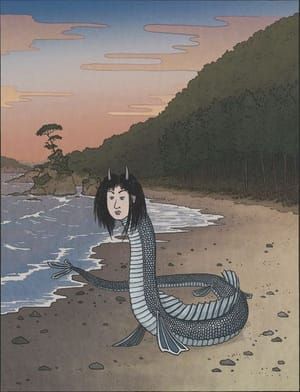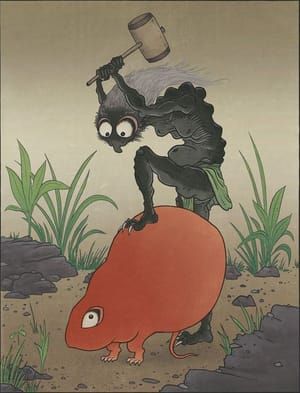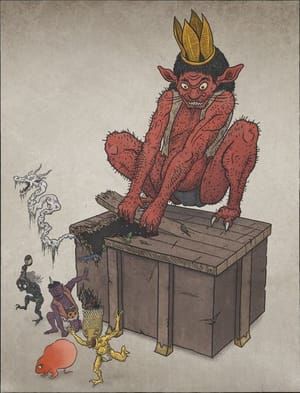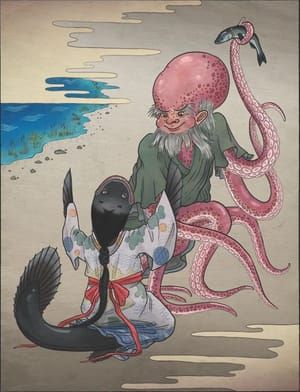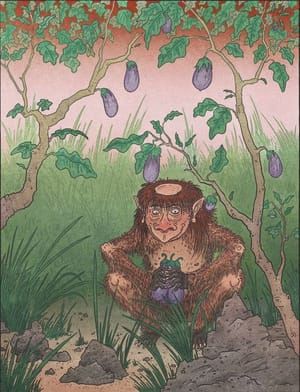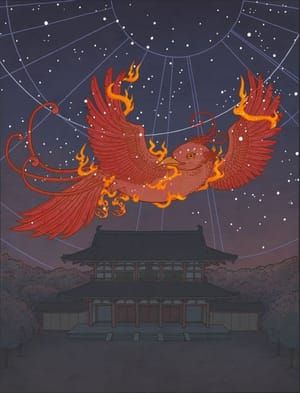
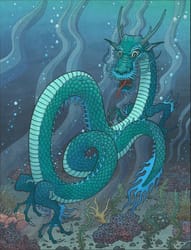
Wani, 2015
Matthew Meyer
和邇
Wani are sea monsters that live in deep bodies of water. They have long, serpentine bodies, fins, and can breathe both air and water. Wani are able to shapeshift into humans, and there are even tales of wani and humans falling in love.
Wani are the rulers of the oceans and gods of the sea. They live in splendid coral palaces deep on the ocean floor. Wani have a complex political hierarchy which mirrors that of the surface world. There are kings and queens, princes and princess, courtesans, servants, and so on. Ōwatatsumi, also known as Ryūjin, is the greatest of them. He rules the sea from his palace Ryūgū-jō. He controls the ebb and flow of the ocean using the tide jewels kanju and manju.
Wani appear in the earliest written records of Japanese myths, the Kojiki and Nihon shoki. Their stories almost certainly date back even further, into the mists of prehistory. Scholars disagree over whether the earliest legends of wani originated in Japan or were imported from other cultures, citing similarities between wani and the Chinese long or the Indian naga. Wani play an important role in Japanese mythology, including in the mythological founding of Japan.
The word wani first appears in the Kojiki written with man’yōgana (an archaic phonetic syllabary). Later it came to be written with the kanji 鰐. Wani came to refer to sharks and other “sea monsters” that sailors and fishermen might encounter out at sea. The sea was a dangerous and mysterious place, and sailors may have thought that sharks were the powerful serpents of legends. Over time, the meaning of the word expanded to include to crocodiles as well as sharks, and then shifted to refer only to crocodiles. Today both the kanji and the name wani mean “crocodile” and are rarely used to refer to sea dragons.
Read more: http://yokai.com/wani/
Matthew Meyer
artistArthur
Wait what?

